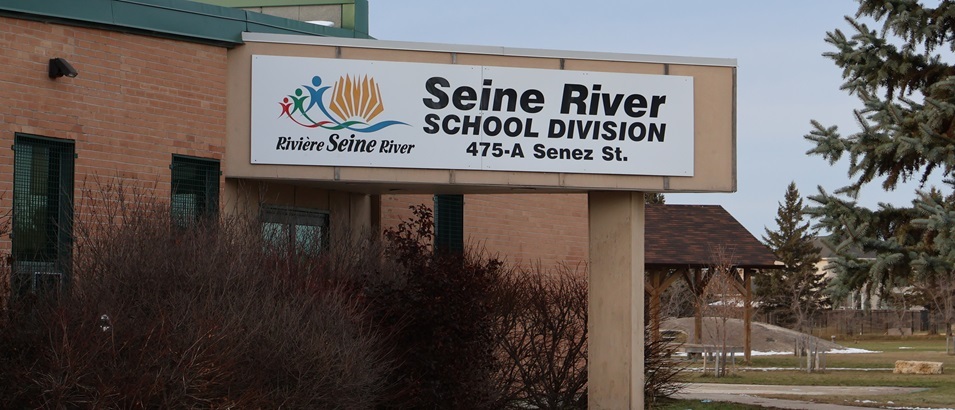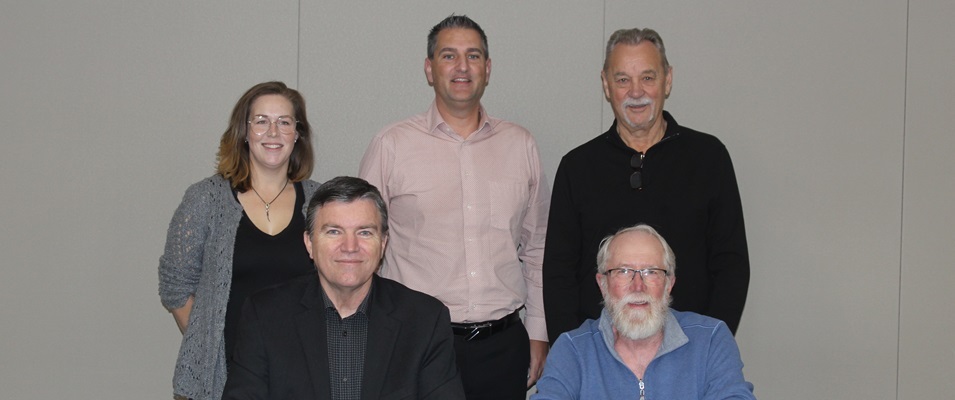
On November 3, parents with children attending school in the Seine River School Division (SRSD) were notified of new cost-saving measures which have the potential to affect every school and every student in the division.
In the RM of Ritchot, the SRSD oversees schools in St. Adolphe and Île-des-Chênes.
Effective immediately, a hiring freeze will be applied to all schools, with the division making attempts to fill current vacancies internally. As well, an immediate suspension will be instituted on non-essential purchases across all schools and departments.
Further to these cutbacks, a new fee for service model will be introduced in January 2024 for services the division has absorbed into its own budget in past years and which are not funded through the Public Schools Act.
This will include bussing for students from Kindergarten to Grade 4 who live less than 1.6 kilometres from school as well as the Kids at Play (KAP) program, also known as Strong Start.
The KAP program runs alongside SRSD’s Kindergarten program, taking up the other half of the school day. Taught by an early childhood educator (ECE), KAP offers high-quality, rich, and diverse learning environments to enhance a child’s developmental experience in their Kindergarten year.
Beginning on January 8, parents wishing to keep their children in KAP will be required to pay $190 per month for the balance of the school year. Income-based subsidies will be provided for families with a household income of $50,000 or less.
Parents have until December 1 to indicate their intention to keep their child in the program in the new year.
For those living within .8 and 1.6 kilometres of the school, a $200 fee will apply if transportation is desired. This one-time fee will cover transportation from January through June of 2024.
“This service was put in place during a time when the board had the ability to generate additional revenues through local taxation,” the letter states.
A similar subsidy is available for the bussing fee, and the deadline to apply is December 15.
At the outset, the letter stated that the austerity measures being implemented were the result of a comprehensive analysis of the division’s financials by senior administration and the board of trustees.
The analysis revealed a negative multi-year trajectory impacted by the province’s freeze on taxation and market volatility caused by COVID-19.
“The division has historically relied on the local levy to offset the costs of programs and services that are beyond what is funded by the province, and, as you may know, this option is no longer available to school divisions,” the letter goes on to say. “Additionally, increased costs of supplies… further impact the division’s budget.”
Following an inpouring of parental concern, another letter was released six days later by Wendy Bloomfield, board chairperson of the SRSD. Her stated goal was to provide greater public transparency.
In March of this year, after the 2023–24 budget met with the board’s approval, it was posted publicly on the division’s website. In late July, with the arrival of the division’s new secretary treasurer, it underwent a comprehensive review and was promptly removed from public view.
“The board was advised that the budget contained accounting errors, inaccurate and unreliable projections, and failed to account for certain reasonably anticipated costs,” Bloomfield states.
In consultation with the province, she adds that the board and senior admin are currently working together on an amended budget which will be reposted upon its completion and once it’s been subjected to an audit.
“The board would also like to make clear that, had the comprehensive financial review been conducted earlier, the cost-saving measures would still have been required and likely would have been implemented sooner,” says Bloomfield.
The deficit being faced by the division is $1.3 million. Even with the new austerity measures in place, they are projecting a continued deficit at the end of the 2023–24 school year.
Upon discovery of the budget concerns, Bloomfield says that the board kept to non-public meetings to review and discuss options. They determined that the solutions proposed to parents in the November 3 letter posed the least detrimental effect on educational programming.
The public was not pulled into the conversation earlier, she says, because of the need to act with urgency.
Even so, Bloomfield says that the board remains committed to increased public consultation during next year’s budget process.
The next SRSD public meeting is scheduled for Tuesday, November 14 at the École Lorette Immersion School. The cost-saving measures are on the agenda for discussion and at least one parent, Christine Hollyoake, is scheduled to address the board.
Hollyoake is a resident of St. Adolphe with a child in the local school system. In anticipation of her son attending Kindergarten this fall, Hollyoake gave up her son’s coveted daycare spot in the fall and enrolled him in KAP.
“There’s that developmental leap that they just don’t get at daycare because resources and programming are slim with all of the shortages that exist right now with ECEs,” Hollyoake says. “The Kids at Play program is play-led developmental learning to get them a little more Kindergarten ready.”
Her son, she says, has some neurodivergent tendencies, but so far they’ve been unable to get a diagnosis due to healthcare wait lists. Still, in just better than two months in the KAP program, Hollyoake has already seen major leaps in her son’s development and finds herself a big believer in the model.
According to Hollyoake, there are around 350 students enrolled in SRSD’s KAP program which has been offered by the division at no cost to parents for about nine years.
The question hangs as to whether the program will run at all if only a percentage of parents re-enroll for January. And if it doesn’t, that could leave the parents of many students at a loss for childcare in just a few weeks’ time. Childcare is already at a premium across the province and wait lists are long.
“That doesn’t even give me enough time to check to see if my employer can accommodate me working part-time while I have a child at home,” Hollyoake says.
If the program does continue in the new year, Hollyoake wonders whether SRSD will be able to manage the extra bussing requirements for those kids who are only spending a half day in school while others spend the full day with KAP.
While $190 in monthly KAP fees may not sound like a lot, Hollyoake suggests that, for many parents, these costs may be compounded by the fact that parents are also paying for after-school care at the daycare. So between KAP and daycare costs, some will be paying upwards of $400 per month in fees.
And if a child lives between .8 and 1.6 kilometres from the school, bussing costs will further cripple some families’ budgets.
Hollyoake and her family live in the residential development of Tourond Creek. Her home is located just beyond the 1.6-kilometre requirement. Other families living closer to the entrance of Tourond Creek, though, will no longer be eligible for free bussing, even though the bus will pass directly by their homes to make its way to Hollyoake’s house.
Many families in St. Adolphe’s north end development, too, will be affected by this new bussing policy. Hollyoake says they’ll need to make a decision between paying for bussing fees or their child’s safety.
She refers to the very dangerous crossing at the community’s busiest intersection on the corner of Highways 200 and 210. For parts of the school day, a crossing guard is posted there to assist kids across.
“We don’t know if the crossing guard will still be there in January either,” Hollyoake says. “The crossing guard works on a contract basis with the division.”
Any way you slice it, these latest changes are going to impact heavily on many parents and their children. Introducing these fees after the school year is already underway may not be sound policy.
According to the Manitoba School Fee Policy, “Effective the 1999–2000 school year, school divisions/districts must make available to parents a comprehensive fee schedule prior to the start of each school year.”1
“To introduce changes like this, mid-year, is unprecedented,” Hollyoake says. “I don’t think I’ve ever heard of another situation when a school board tried to do this.”



















